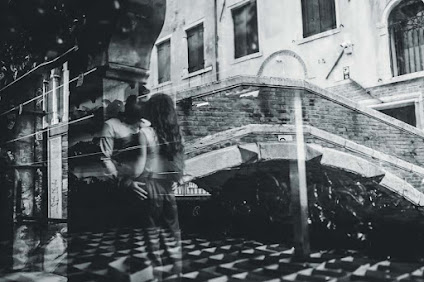Starting Out in Photography: A Practical Guide for Beginners
Photography is an accessible and rewarding hobby, but for many people, the first steps can feel overwhelming. Between technical terms, gear choices, and the flood of online advice, it’s easy to get stuck. This guide offers a clear starting point: what you need to know, what you don’t, and how to begin taking photos with purpose.
1. Understand the Basics of How a Camera Works
Before diving into settings or gear, it’s important to understand how a camera captures an image. The three main elements of exposure—ISO, aperture, and shutter speed—form what’s often called the “exposure triangle.”
-
ISO controls the camera sensor’s sensitivity to light.
-
Aperture refers to the size of the lens opening, affecting both light intake and depth of field.
-
Shutter speed determines how long the sensor is exposed to light.
Together, these variables control brightness and sharpness. For a deeper explanation, you can explore the Wikipedia article on exposure in photography.
Understanding Exposure: A Guide to Mastering Photography Techniques
2. Start with the Gear You Have
Many beginners worry they need a DSLR or mirrorless camera right away. In reality, most smartphones today offer manual settings and high-resolution sensors. Instead of focusing on upgrading your gear, concentrate on learning how to compose a shot, use natural light, and understand your subject.
If you decide to invest in a dedicated camera, a basic entry-level DSLR or mirrorless model with a kit lens is more than enough to start.
3. Learn the Importance of Composition
Composition is how elements are arranged in a frame. Even without technical knowledge, strong composition makes a photo compelling. Key rules include:
-
The Rule of Thirds: Divide the frame into a 3x3 grid. Place key elements along the lines or at their intersections.
-
Leading Lines: Use roads, paths, or shadows to guide the viewer’s eye.
-
Framing: Use natural elements like doorways or arches to frame your subject.
-
Negative Space: Leave areas of emptiness to give the subject room to “breathe.”
You can explore more about composition techniques from resources like Cambridge in Colour.
4. Practice with Natural Light
Lighting affects mood, clarity, and depth. Start by using available light—especially soft morning or evening light. Avoid harsh midday sun when possible.
Practice observing how light changes across the day. Indoors, use windows as your main source of light. You don’t need expensive equipment—understanding how light falls on your subject is more important than buying lights.
Shooting in Different Light Conditions: Mastering Natural and Artificial Light
5. Shoot in Manual Mode (When You’re Ready)
Many beginners use Auto mode for convenience, but learning manual mode gives you full control over your images. Start gradually:
-
Use Aperture Priority (A or Av) mode to control depth of field.
-
Try Shutter Priority (S or Tv) when photographing motion.
-
Move to Manual (M) once you understand how aperture, shutter speed, and ISO work together.
If you're unsure how to begin, try one variable at a time. Set ISO and shutter speed, and experiment by adjusting only aperture. Then reverse.
Manual Mode Mastery: Adjusting Settings for Full Creative Control
6. Edit Your Photos to Understand Your Mistakes
Editing helps you see what you missed during shooting. Free programs like Darktable or mobile apps like Snapseed let you adjust exposure, crop, and sharpen without expensive software.
Pay attention to:
-
Exposure issues: Too bright or too dark?
-
Color cast: Is the white balance off?
-
Clarity: Is the photo soft due to slow shutter speed or poor focus?
Avoid filters at this stage—use editing as a tool to learn, not to cover up.
7. Develop a Routine of Practice
The best way to improve is to shoot regularly. Choose a weekly challenge or document daily moments. Photography improves with repetition and analysis.
Consider:
-
Choosing a theme each week (e.g., shadows, reflections, symmetry).
-
Repeating the same subject in different light conditions.
-
Keeping a journal where you log settings and results.
Sites like DPReview or online forums on Reddit (e.g., r/photography) offer community support and critiques.
8. Study the Work of Others
Looking at others’ photography trains your eye. Don’t just scroll—analyze why you like a photo. Is it the angle? The lighting? The colors?
Consider exploring historical photographers like Henri Cartier-Bresson (street photography), Ansel Adams (landscape), or Vivian Maier (urban portraiture). Their work is often available in public archives or official websites.
Use platforms like Flickr, Behance, or photo blogs to explore different genres.
9. Backup and Organize from the Start
Even as a beginner, having a consistent file-naming and folder system avoids confusion later. Use date-based folders and keywords. For example:
Consider using cloud backups or external drives. Photo organization tools like Adobe Lightroom offer cataloging features that help long-term.
10. Don’t Rush to Define Your Style
Many beginners try to find their “style” right away. Style comes from experience. Focus instead on experimenting with different subjects: portraits, landscapes, urban scenes, or still life.
Only after hundreds of photos will you start seeing what you’re drawn to.
About Us
We are professional photographers based in Venice with over a decade of experience capturing portraits, couples, and families in the unique atmosphere of the city. Our approach combines candid moments with thoughtful composition, always respecting the rhythm of Venetian life. We also offer guidance for those starting out in photography during our sessions and workshops.
If you’re visiting and want to put your new skills into practice—or simply want professional documentation of your trip—consider booking a Venice Italy Photoshoot with us.
We believe that everyone can improve their photography through observation, intention, and practice—whether you’re shooting with a phone or a full-frame camera.
.jpg)



Comments
Post a Comment